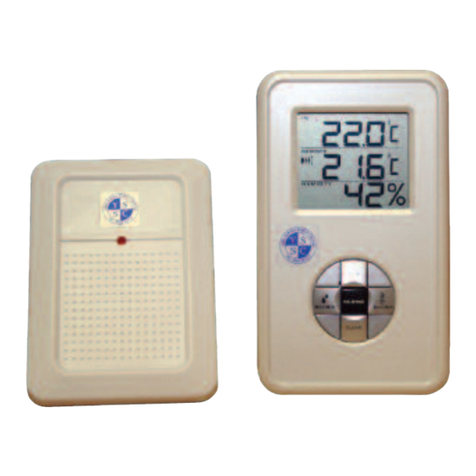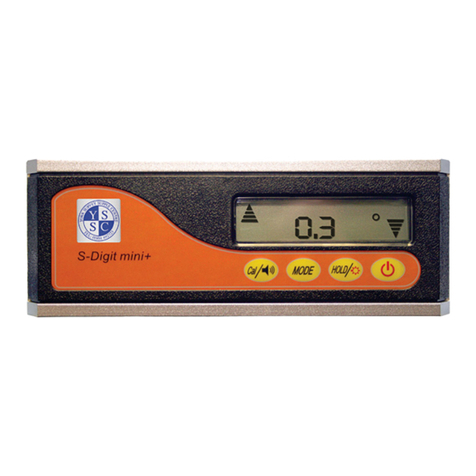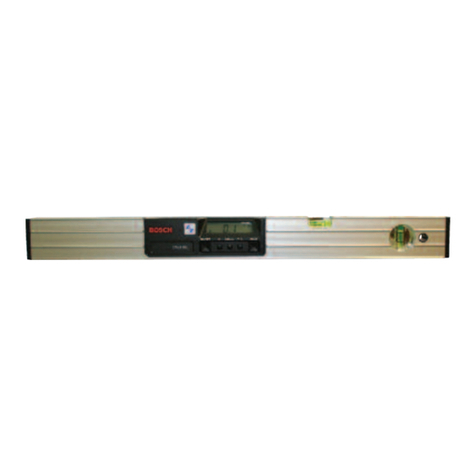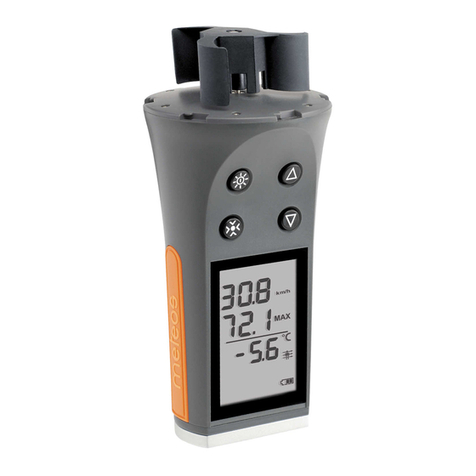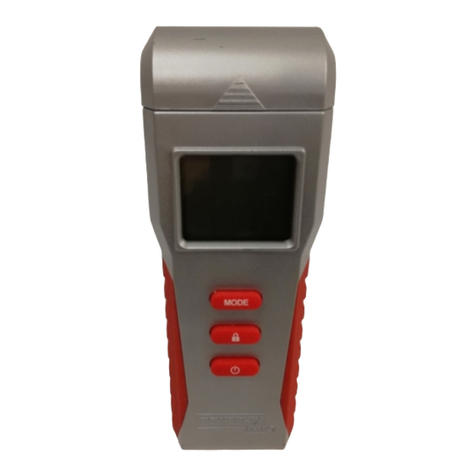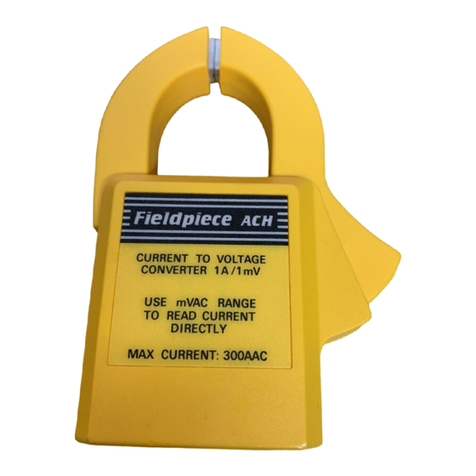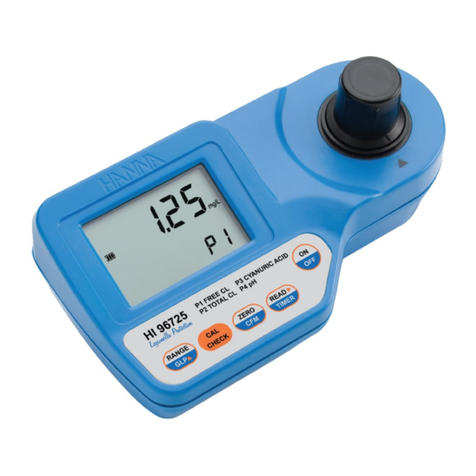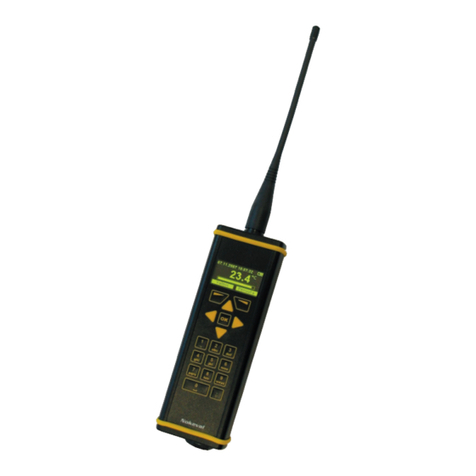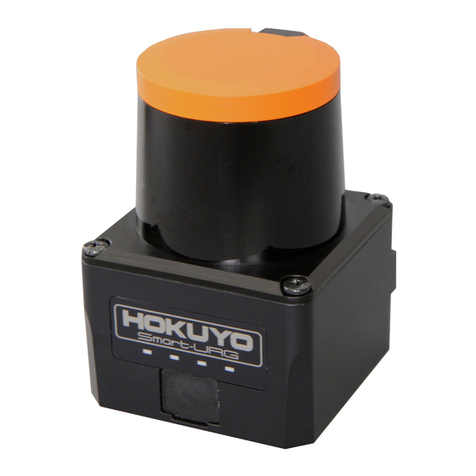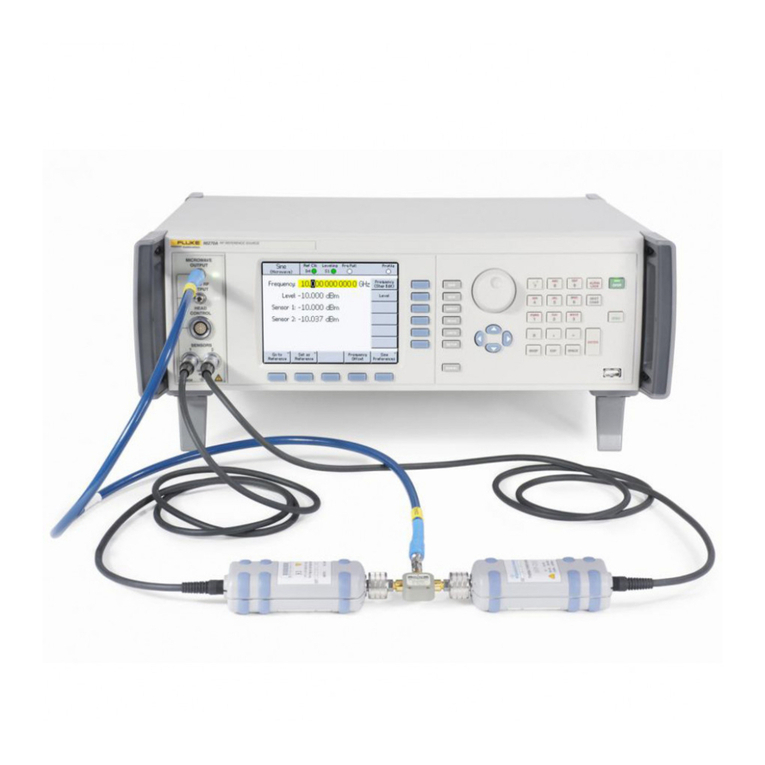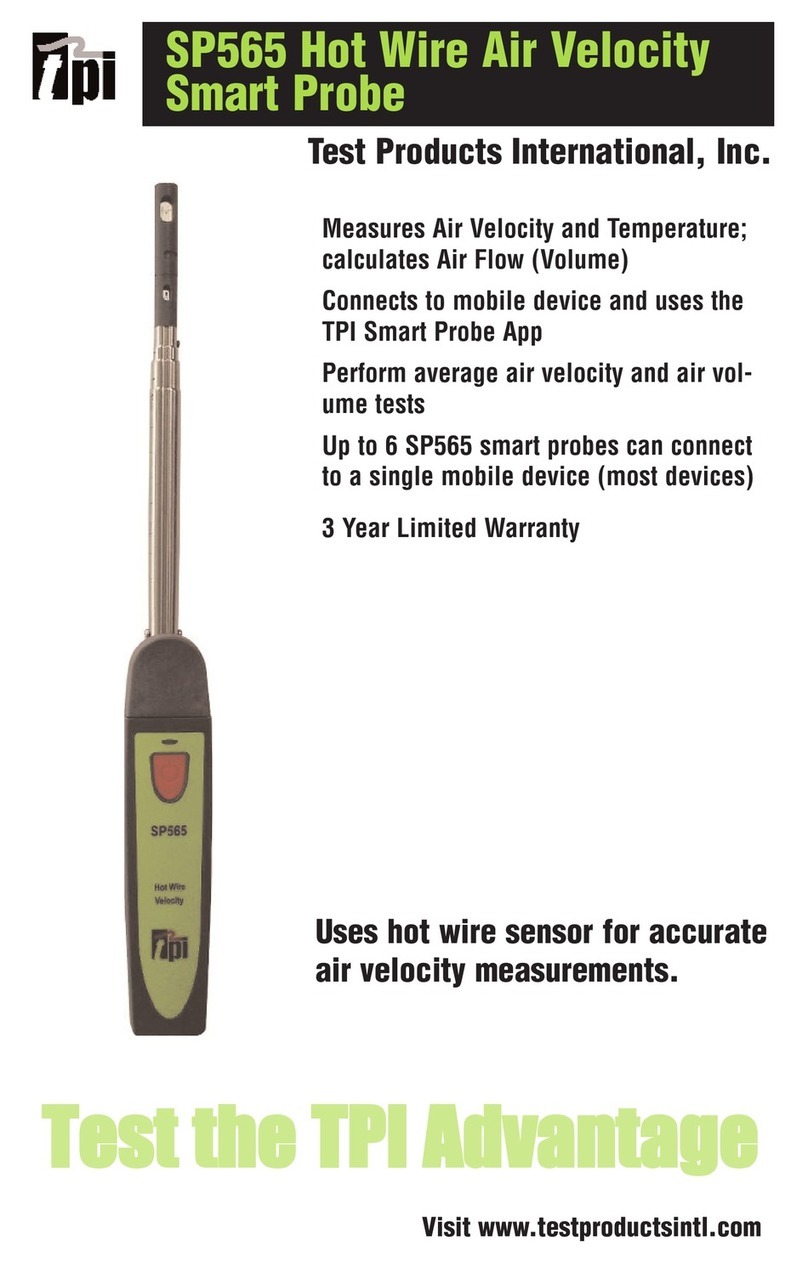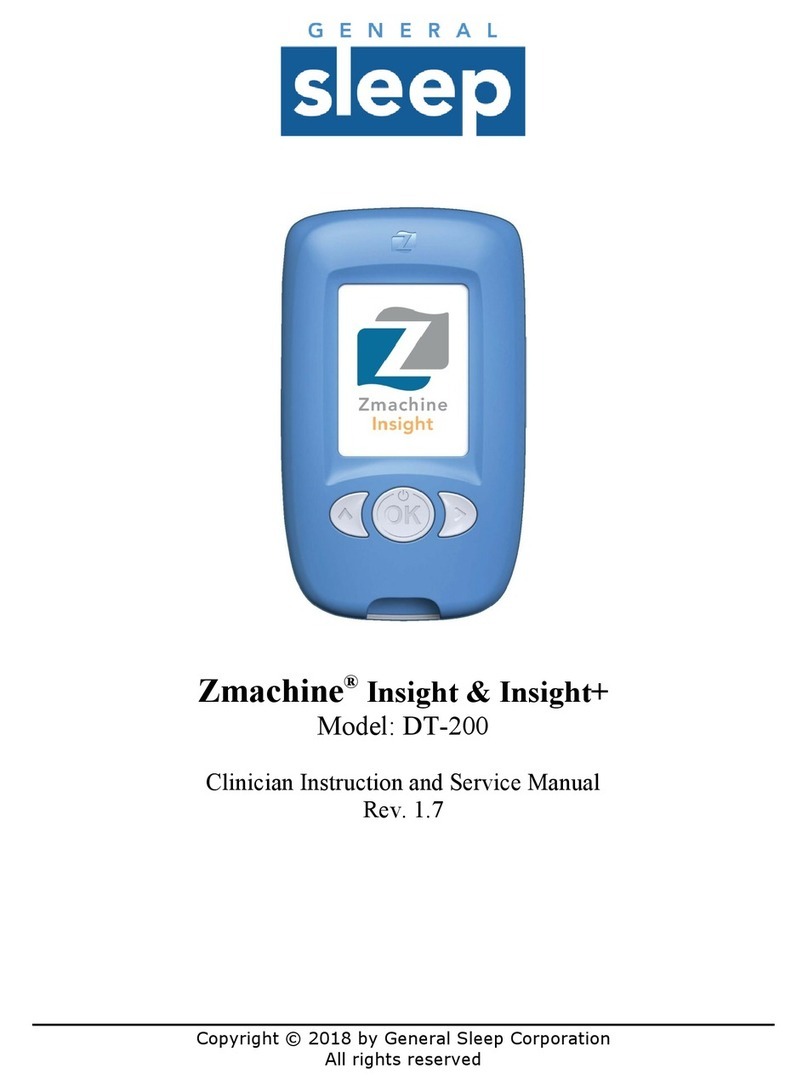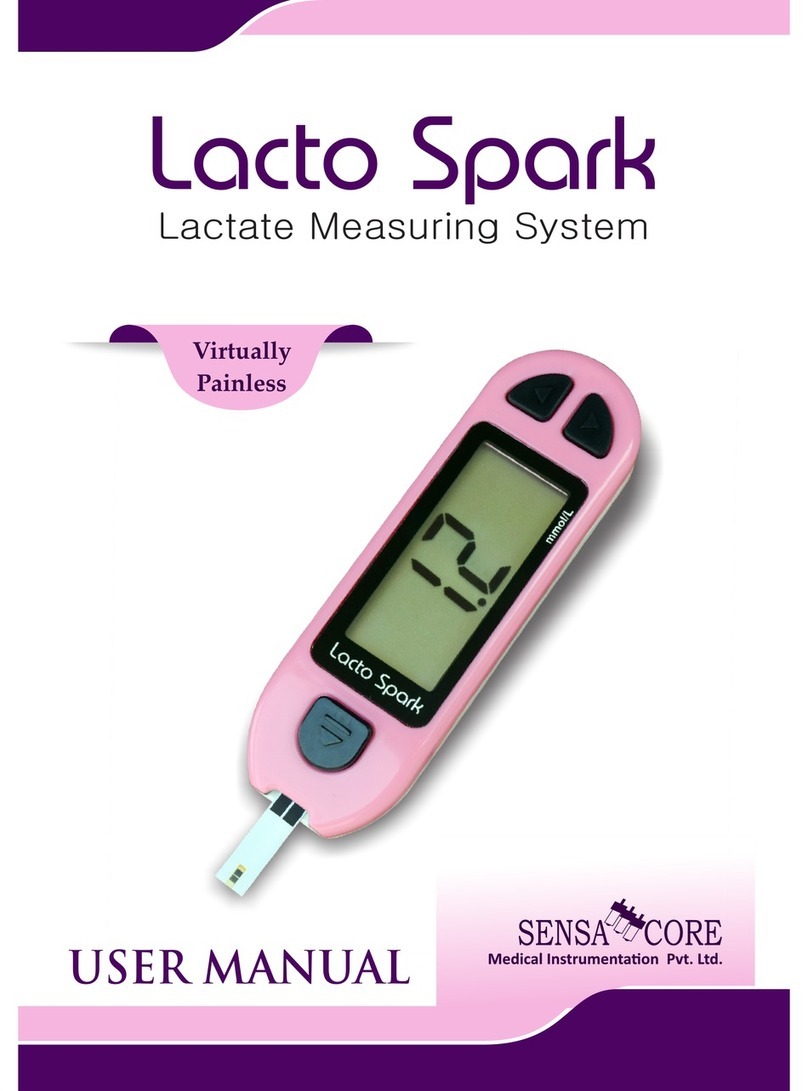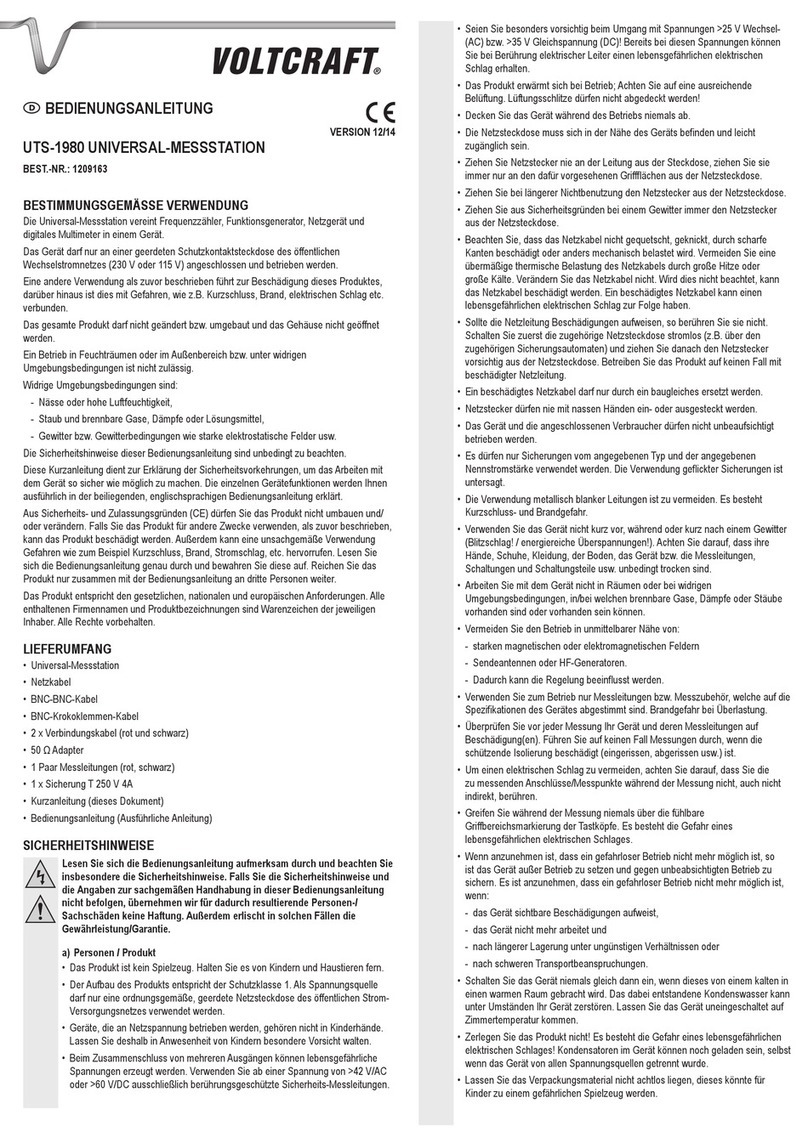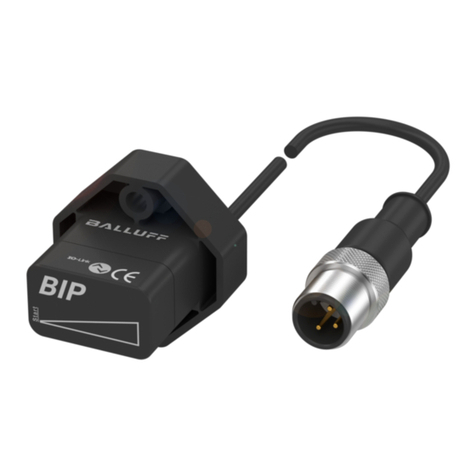©York Survey Supply Centre 2018Ref:.. \operat98\instructions 18\346010.qxp 05-01-18 4 5
2.3.2.1 Measure mode
• Continuous measurement mode: It can sometimes be of
advantage if the probe does not need to be raised between
each measurement so that there is a running display of
readings. In continuous mode, readings are not
accompanied by a bleep. All readings taken in this mode
will automatically be entered into the statistics program as
long as sufficient memory is available.
• Single mode: In Single mode, readings are accompanied by
a bleep. Otherwise same as Continuous measurement
mode.
2.3.2.2 Used probe
The probe can work in three modes.
AUTO: The probe can automatically select the working
mode. When placed on steel (magnetic substrates), it will
work in magnetic induction principle. When placed on
non-ferrous metals, it will work in eddy current principle.
Fe: The probe works in magnetic induction principle.
No-Fe: The probe works in eddy current principle.
2.3.2.3 Unit Settings
You can switch from Metric units (µm, mm) to Imperial (mils).
in “µm” mode, the unit will switch to “mm” automatically when
value of reading exceeds 850µm, see the specification
section for more details.
2.3.2.4 Total Reset
A total reset erases data from all memories. This includes all
sets of readings of all work modes plus their associated
statistics, calibration values and tolerance limits.
• Switch off gauge.
• Press ZERO and simultaneously.
• The LCD displays “sure to reset”, press the red bar button
for YES or blue bar button for NO.
• The gauge will restart automatically.
2.3.2.5 Backlight
You can select ON/OFF in MENU system. Besides, in
measuring mode, press the blue bar button once to switch
ON/OFF the backlight.
2.3.2.6 LCD Statistic
In Menu system mode, the statistic display can be selected
between Average, Maximum, Minimum and Sdev. When
returned to measurement mode, it will be displayed on the
lower right of the LCD. At the same time, the statistic number
of measuring readings is displayed on the lower left of LCD.
Via “statistic view” item in MENU system, you can look
through all statistic values for the current group.
2.3.2.7 Measurement view
Via “Measurement view” in MENU, you can look through all
measurement readings for current group.
2.3.2.8 Auto power off
You can disable Auto-power-off via the MENU system or the
gauge will power off automatically after about 3 minutes.
3. Measuring, Storage and Data Processing in
Direct and Group Mode
This gauge offers two operating modes: DIRECT and Group
mode. The GROUP mode includes GRO 1~4.
• DIRECT mode is intended for quick occasional readings. In
this mode, individual readings are logged to memory
provisionally. When powered off or switched to GROUP
mode, all readings will be cleared but the statistic values
won’t be changed until logging new measurement readings.
The readings and statistical values can be shown on the
LCD screen. The statistical analysis program can evaluate
80 readings. When the memory is full, new readings will
replace old readings. In this mode, it has individual
calibration values and limit values.
• In GROUP mode, every group memory can store a
maximum of 80 single readings and 5 statistic values.
Calibration values and limit values can individually be set
and stored for every group. When the memory is full,
measuring will continue but not be stored and statistic
values won’t be changed. If needed, you can delete group
data and statistic values, and reset calibration values and
limit values.
• You can select DIRECT and GROUP mode in MENU
system.
NOTE: in order to work in GROUP mode, e.g. to calibrate,
take readings, set limit, the word “GROX” must appear on the
LCD screen, if not, you can set measurement in the MENU
system.
• Press while holding the probe in the air. The gauge will
work in DIRECT mode. And the last reading will be shown
(if available).
4. Calibration and Measurement
4.1 Gener l Hints for C libr tion
4.1.1 Calibration methods
There are four different methods available for calibration:
• Basic calibration: recommended for measurement on even
surfaces and if the measuring object has the same material,
size and curvature as the zero plate attached to the casing.
• Zero point calibration: recommended if measuring errors up
to ±(3% of reading plus constant error of probe) are
permitted. (Example of constant probe error: Fe 1µm;
no-Fe 1.5µm)
• One point calibration (calibrating using a calibration foil):
recommended if readings to be expected will be close to the
calibration value and if the permitted error of probe will be
max. ±(1%...3% of reading plus constant probe error).
• Two point calibration (using a set of two calibration foils).
A) Recommended for measurements on rough surfaces.
B) Recommended for precise measurements on smooth
surface if the thickness to be expected lies between that of
the two calibration foils.
4.1.2 Storing Calibration Values
If the gauge is calibrated for a particular purpose, the
calibration values will be stored in memory until changed.
NOTE: The calibration procedure should be restarted from
the beginning if:
• An incorrect reading has been taken.
• An incorrect command has been entered.
• The gauge has switched off.
4.1.3 Calibration Example
Calibration is the most important requirement for accurate
measurement. The more closely the calibration sample
matches the product sample, the more accurate the
calibration, and therefore the reading, will be. If, for instance,
a product is to be measured on a steel cylinder, quality ST37
(mild steel), diameter 6mm, the calibration of the uncoated
sample must take place on a steel cylinder of similar quality
with the same diameter.
The calibration sample must correspond to the product
sample in the following ways:
• Curvature radius
• Substrate material properties
• Substrate thickness
• Size of measuring area
• The point at which the calibration is made on the calibration
sample must always be identical with the point of
measurement on the product itself, especially in the case of
corners and edges of small parts.
4.1.4 igh Accuracy Calibration
To achieve high-accuracy readings, it is advisable to log
calibration values (both zero values and calibration foil
values) several times in succession. In this way, the gauge
will automatically establish a mean calibration value. For
more details see 4.2 Special ints for Calibration. The high
accuracy calibration is an obvious advantage when
calibrating on uneven, e.g. shot-blasted, surfaces.
4.1.5 Cleaning the Measuring Point
Before calibration the measuring point of the probe tip must
be free from grease, oil, scraps of metal, etc. The slightest
impurity will affect measurement and distort readings.
4.2 Speci l Hints for C libr tion
The basic calibration stored in the gauge should only be
used for measurements on even surfaces, i.e. on steel
components made of conventional steel (mild steel) or on
aluminium components.
Firstly, you can turn into Calibration Mode via MENU system
(Menu>Calibration>Enable). Then the LCD will show “Cal
n(or 1~2) Zero n(or y)”. The “n” means not any point
calibration and Zero calibration and “y” means “there is Zero
calibration”. “Cal 1~2” means “there is One or Two point
calibration”. After finishing all calibration tasks, we advise that
you disable calibration via the MENU system.
Preparing to calibrate:
• Switch the gauge on (at least 10cm from any metal).
• Substrate sample and necessary foils (calibration standard)
• Set work mode: continuous or single, via MENU.
4.2.1 Zero Point Calibration (No need to enable calibration)
• Place the probe on uncoated sample (zero coating
thickness) vertically and rapidly.
• The LCD shows <x.xµm>. Operating is different in
continuous mode and single mode. See the work mode
section for more details. Then, raise the probe rapidly (at
least 10 cm from metal substrate).
• Press and hold the ZERO button for about 1.5 seconds, the
LCD will show 0.0µm. The calibration is finished.
• Repeat this procedure several times. The calibration
system always saves the mean value of the previous
calibration points.
NOTE: You can delete the old zero point calibration before
making a new zero point calibration via the MENU system.
The meter always calculates the mean of the last 5
calibration readings. When full, the newest calibration value
will replace the oldest calibration value. We suggest that you
make a Zero calibration when starting a measurement.
4.2.2 One-Point Calibration
This method is recommended for high precision
measurements, measurements on small parts and on
hardened and low-alloy steel.
• Zero point calibration according to section 4.2.1
• Lay the calibration foil on an uncoated sample, apply the
probe and raise it if steady. Press UP or DOWN to adjust
required foil thickness. The thickness of the foil should be
roughly equivalent to the estimated coating thickness.
• Repeat step 2 several times. It will get the mean value of
previous calibration readings.
• Now take readings by placing the probe on the coating and
raise it if steady.
• It may be necessary to delete calibration, e.g. after entry of
a faulty calibration value: MENU>delete>delete group data
(NOTE: It will delete all data, limit data, one-point and
two-point calibrations except for zero-point calibration).
• This will reactivate the default basic calibration for use on
even surfaces.
NOTE: The meter calculates the mean of the last 5
calibration readings. When full, the newest calibration
value will replace the oldest calibration value.
• Press blue bar button to exit current calibration. Or else,
after about 30 seconds, the calibration will become effective
automatically.
• Press ZERO button to make current calibration effective
compulsively. Even while a series of measurements is being
taken, foil calibration can be carried out often as necessary.
The old calibration will be overwritten; the Zero calibration
remains in memory.
4.2.3 Two-Point Calibration
• Suggest that gauge is in single work mode. If necessary
switch to the mode via the MENU system. This method
requires the use of two different foils. The thicker one
should be, if possible, 1.5 times as thick as the thin one.
• For best results, the thickness to be expected should be
somewhere between the two calibration values.
• This method is especially suitable for taking measurements
on rough shot-blasted surfaces or for high-precision
readings. It is advisable to take a mean for several times.
This considerably reduces the effect of scattering which
occurs during calibration of upper and lower values.
The calibration foils may be used in any order.
• Zero point calibration according to section 4.2.1
• The first point calibration according to section 4.2.2
• Repeat step 2
• Take readings by placing the probe on the coating to be
measured and raise it after the beep. The reading is shown
on the display.
NOTE:
• Apply the probe to test sample several times.
• The thickness of the foil should be roughly equivalent to the
estimated coating thickness.
• Even whilst a series of measurements is being taken, foil
calibration can be carried out as often as necessary. The
old calibration will be overwritten; the ZERO calibration
remains in memory until you next make a Zero point
calibration.
• See one-point calibration for more information.
4.2.4 Shot-Blasted Surfaces
The physical nature of shot-blasted surfaces results in
coating thickness readings that are too high. The mean
thickness over the peaks can be determined as follows
(not that the statistics program is of great benefit in this
procedure):
Method A:
• The gauge should be calibrated according to 4.2.2 or 4.2.3.
Use a smooth calibration sample with the same curvature
radius and the same substrate as the later measuring
sample.
